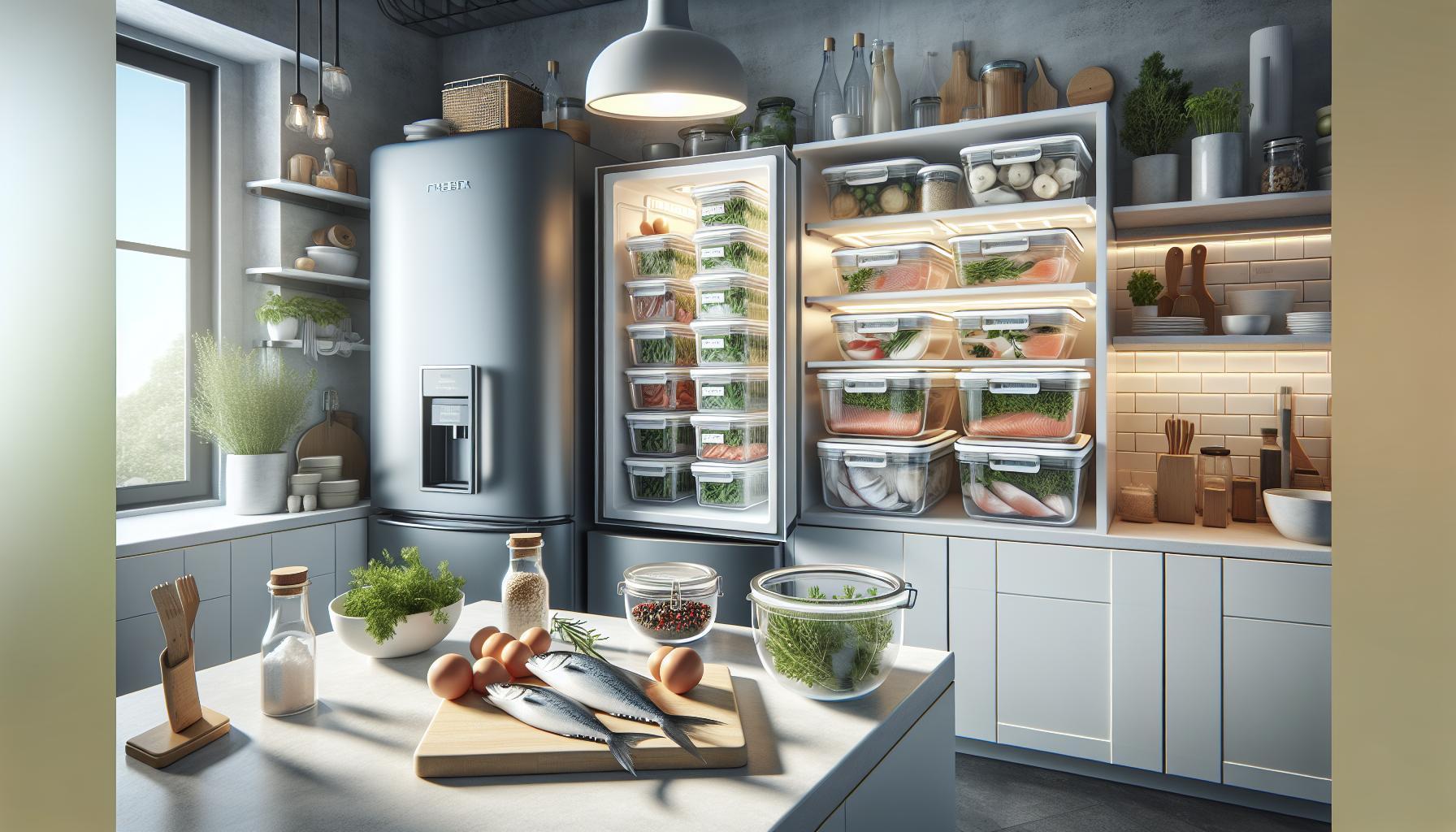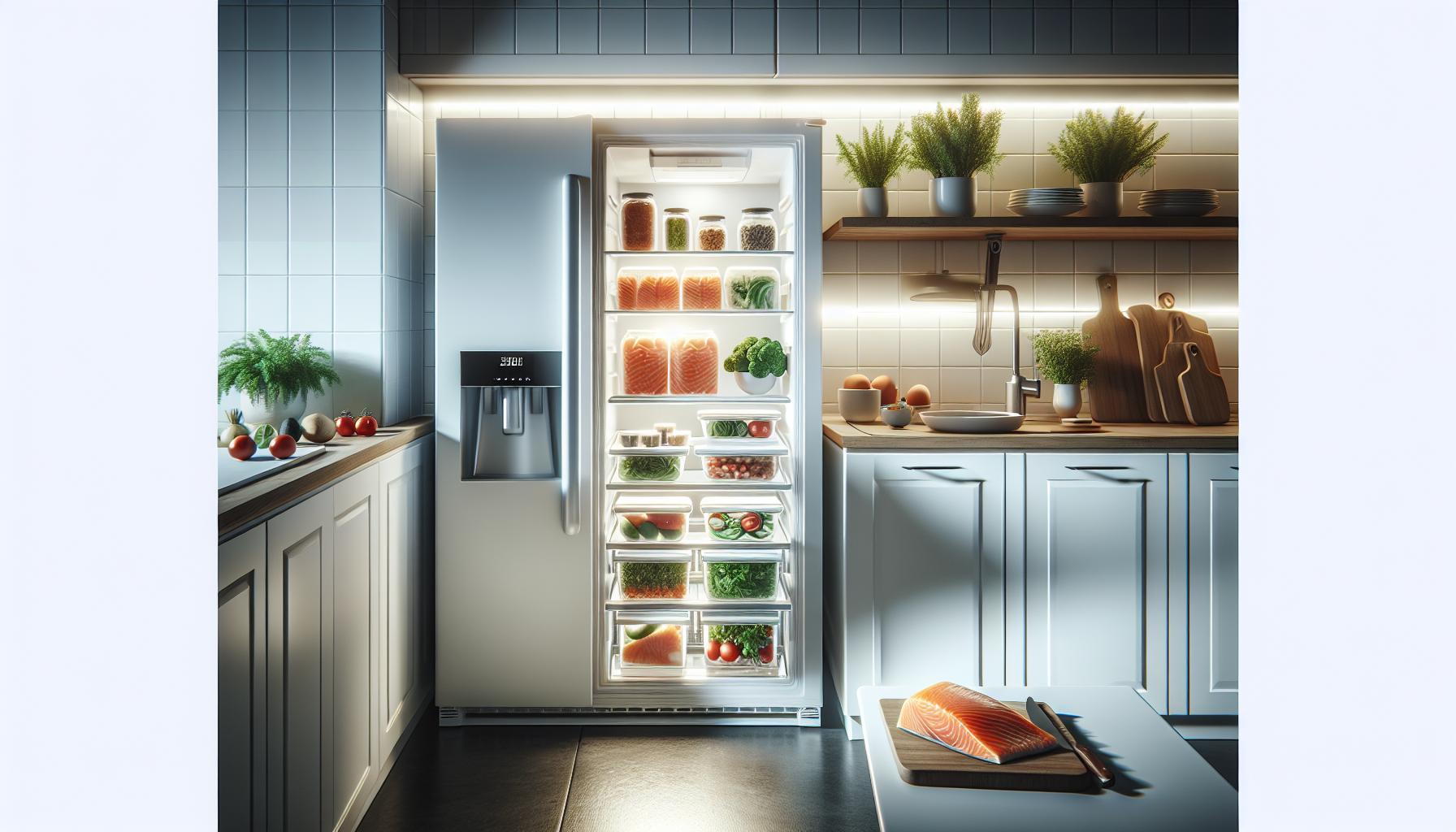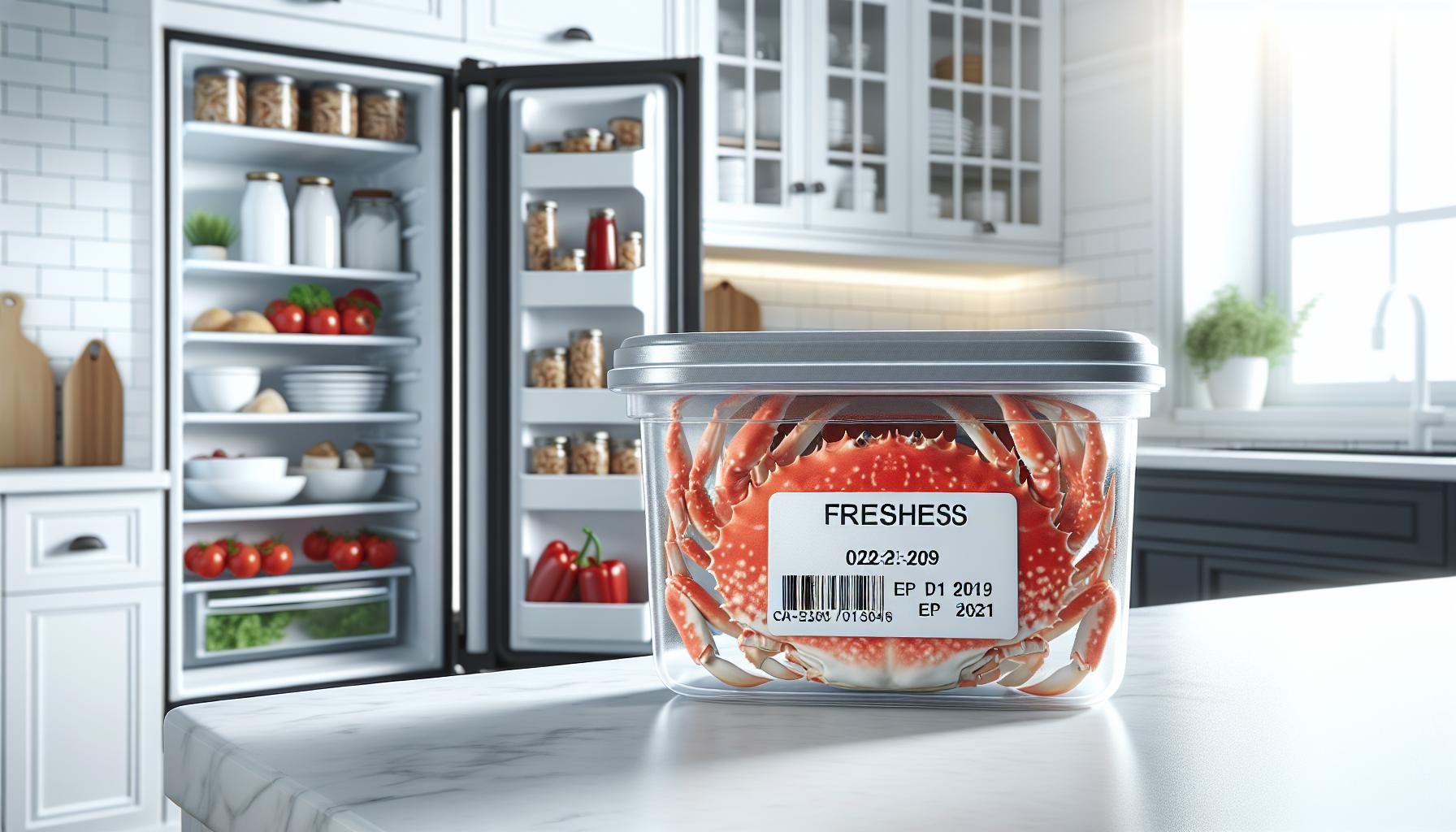When it comes to seafood, shrimp is a beloved favorite in many households, renowned for its versatility and delicious flavor. However, knowing how long raw shrimp can safely be stored in the fridge is essential for both your culinary success and your health. Proper storage not only maximizes freshness but also helps prevent foodborne illness, a concern for anyone handling perishables in the kitchen.
Did you know that raw shrimp should ideally be cooked or frozen within just a couple of days to ensure safety? This critical timeframe can affect your meal planning and dining experience. By understanding the right storage practices and timing, you can avoid waste and enjoy shrimp at its best. Join us as we explore safe storage tips and guidelines that will keep your shrimp fresh and your meals enjoyable.
How Long Can Raw Shrimp Last in the Fridge?
Raw shrimp can be a delightful addition to your meals, but understanding how long it lasts in the fridge is crucial for food safety and quality. Typically, raw shrimp can be safely stored in the refrigerator for 1 to 2 days after purchase, depending on freshness and storage conditions. Whether the shrimp is fresh or previously frozen, its quality diminishes quickly, so it’s essential to handle and store it correctly.
To maximize freshness, keep shrimp in its original packaging or transfer it to an airtight container. It’s also advisable to place the shrimp on a plate and cover it with plastic wrap to minimize exposure to air, which can accelerate spoilage. Always refrigerate shrimp at temperatures below 40°F (4°C). Many people are accustomed to keeping seafood stored in their fridge for longer than recommended, but be mindful that the risk of bacterial growth increases as time passes.
For those who want to enjoy shrimp longer, consider freezing them. Freezing halts bacterial growth, allowing shrimp to maintain quality for several months. However, once thawed, you should consume them within the same 1 to 2-day timeframe as fresh shrimp to ensure safety and taste. By taking these precautions, you can enjoy your shrimp dishes without the worry of spoilage or foodborne illnesses.
Understanding Safe Storage Temperatures for Raw Shrimp
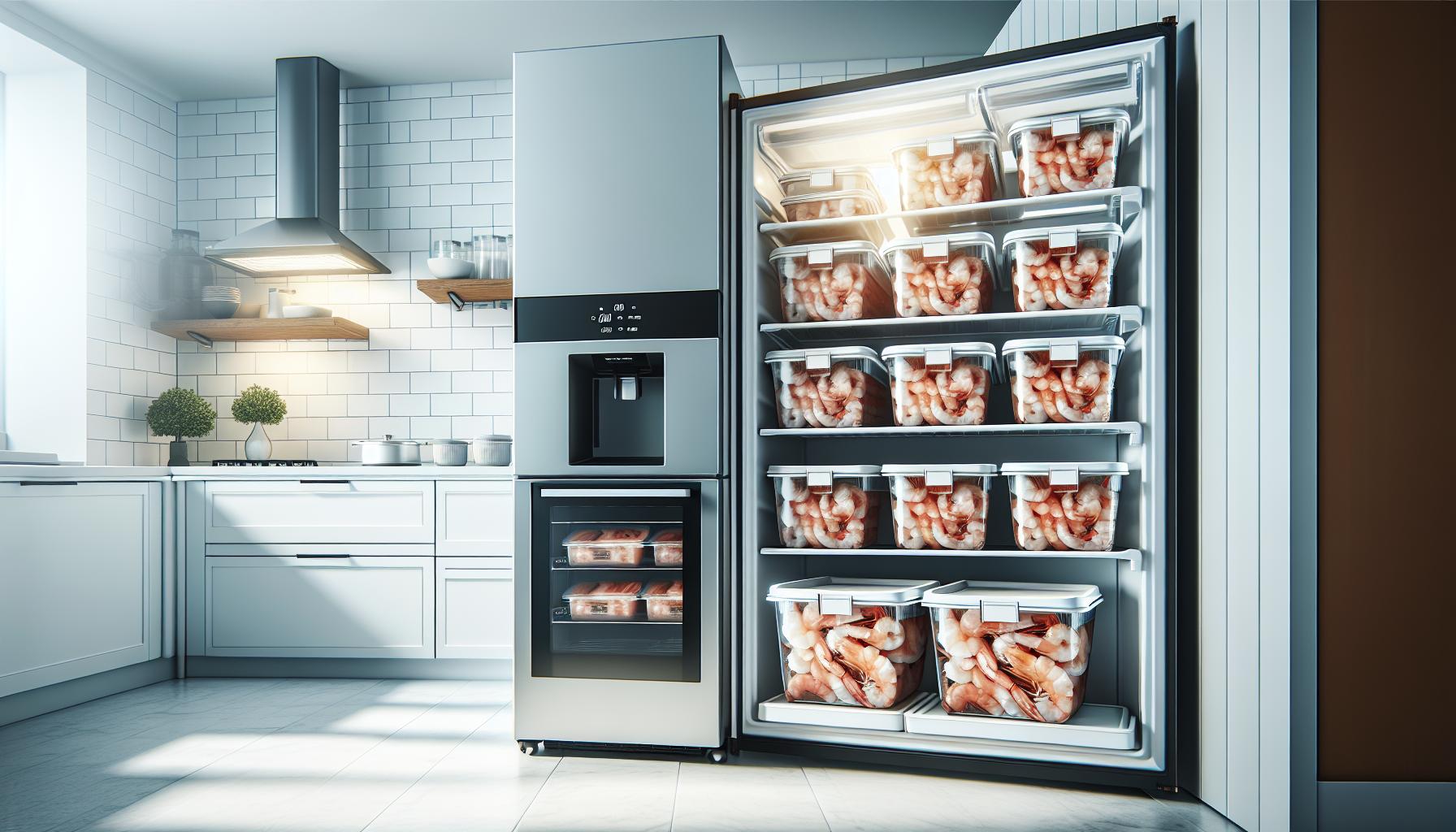
Storing raw shrimp at the right temperature is vital to preserve its freshness and prevent foodborne illnesses. Shrimp is highly perishable, which makes understanding proper storage conditions crucial for maintaining its quality and safety. Ideally, raw shrimp should always be stored in a refrigerator set at temperatures below 40°F (4°C). Operating at these temperatures significantly reduces the risk of bacterial growth, which is one of the leading causes of food spoilage and health risks associated with seafood.
To ensure your shrimp stays fresh, it’s advisable to keep it in its original packaging until you’re ready to use it. If you need to transfer it to a different container, opt for an airtight option to limit exposure to air, which can cause oxidization and off-flavors. Placing shrimp on a plate covered with plastic wrap can also be effective, as it helps to trap moisture and maintains a consistent temperature. Avoid placing shrimp in the warmest part of the fridge, such as the door, as temperature fluctuations can occur with frequent opening and closing.
If you want to extend the lifespan of raw shrimp beyond a couple of days, consider freezing it. When frozen correctly, shrimp can last several months without compromising quality. However, once you thaw frozen shrimp, you must consume it within 1 to 2 days. Always remember that maintaining the right temperature is not only a matter of extending shelf life but also a critical component for food safety, helping you enjoy your meals without potential health concerns.
Identifying Signs of Spoilage in Raw Shrimp
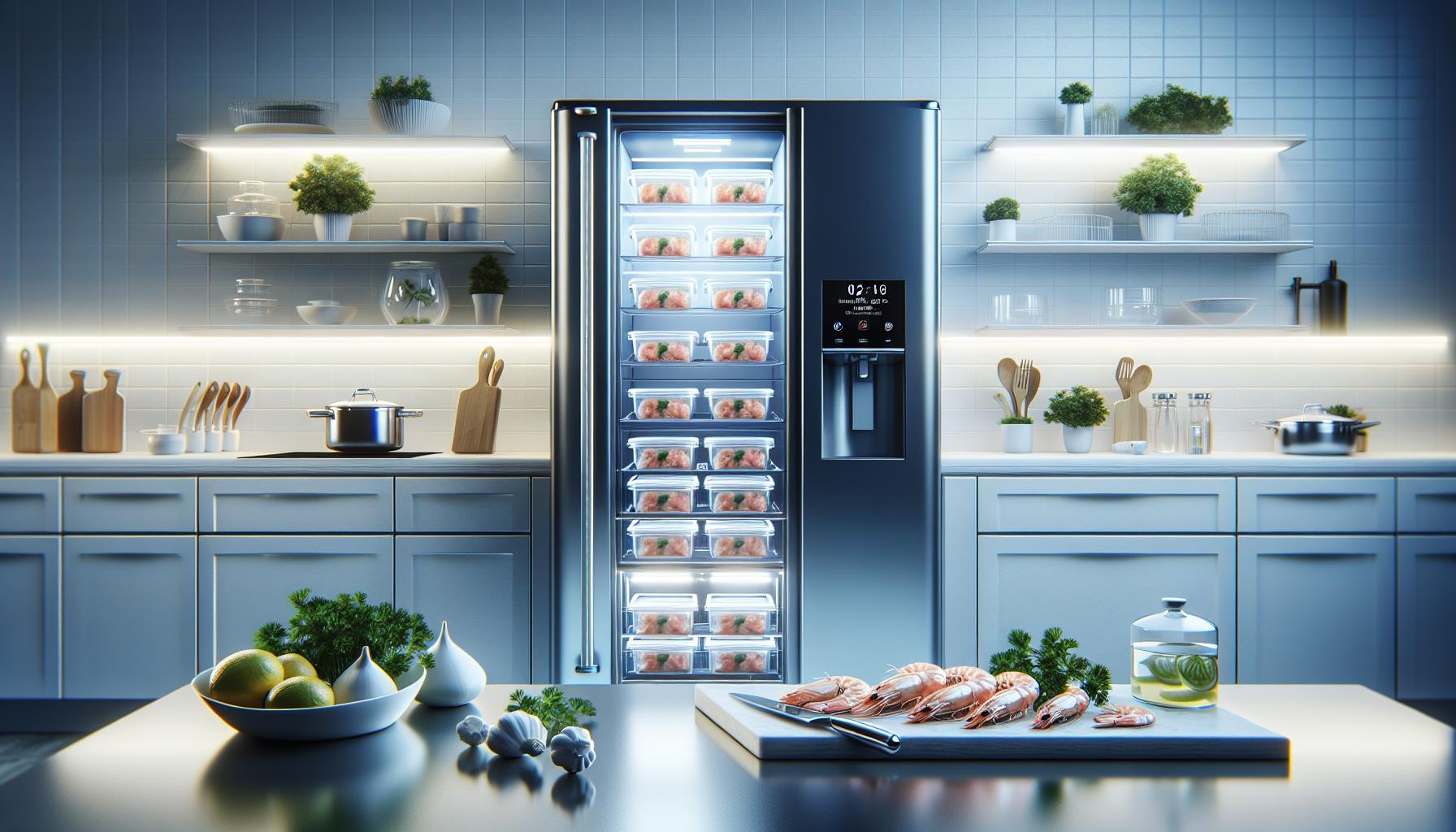
Knowing how to identify signs of spoilage in raw shrimp is essential for ensuring both safety and quality in your meals. Fresh shrimp should have a mild, slightly briny smell, reminiscent of the ocean. If you detect any off or sour odors, this is a clear indication that the shrimp has begun to spoil and should not be consumed. Additionally, pay attention to the texture; fresh shrimp should be firm to the touch. If the shrimp feels slimy or sticky, it’s a sign that bacterial growth has occurred, and it’s best to discard it.
Another critical visual cue is the color of the shrimp. Fresh, uncooked shrimp range in color from translucent gray to light pink, depending on the species. If you notice any discoloration, such as dullness or a yellowish tint, it’s a warning sign that the shrimp has started to go bad. Frozen shrimp should also be inspected; freezer burn, which can appear as white, dry patches, may not make the shrimp unsafe but can affect quality by altering taste and texture.
To maintain quality and safety, always check the sell-by date when purchasing shrimp and aim to cook it within 1 to 2 days of bringing it home. Regularly assessing your stored shrimp for any signs of spoilage will not only help reduce the risk of foodborne illnesses but also ensure that you enjoy the freshest seafood possible. Taking these precautions can make a significant difference in your culinary experiences.
Best Practices for Storing Raw Shrimp in the Fridge

To ensure that raw shrimp remains fresh and safe for consumption, proper storage practices are essential. Firstly, it’s crucial to keep shrimp at a consistent temperature below 40°F (4°C). This low temperature helps to inhibit bacterial growth and prolongs the shrimp’s shelf life, which is typically 1 to 2 days in the refrigerator once purchased. To maintain optimal freshness, plan to prepare your shrimp as soon as possible after bringing it home.
When storing raw shrimp, always place it in a covered container or a resealable plastic bag to prevent cross-contamination with other foods. If possible, store it on the bottom shelf of the fridge, where temperatures tend to be the coldest, avoiding any contact with other foods. To further enhance safety, consider placing the shrimp on a bed of ice in a shallow dish, draining any excess water from melting ice regularly. This method can help maintain a consistently low temperature around the shrimp.
It’s also important to prepare shrimp for storage by removing the shells and deveining if necessary. These steps not only enhance its freshness but also make cleaning and cooking easier later on. Remember to always check the sell-by date when purchasing shrimp and consume it promptly. Regularly inspect your stored shrimp for any signs of spoilage, such as off odors, sliminess, or discoloration, which can indicate that the shrimp is no longer safe to eat. By following these guidelines, you can enjoy fresh, delicious shrimp while minimizing the risk of foodborne illness.
Can You Freeze Raw Shrimp for Longer Storage?
Freezing raw shrimp is an excellent way to extend its shelf life significantly beyond the typical 1 to 2 days in the refrigerator. When properly frozen, shrimp can last for up to 6 months while retaining its quality. This makes freezing a handy option for seafood lovers who want to stock up on shrimp without the worry of spoilage. However, there are some important steps to follow to ensure the shrimp maintains its flavor, texture, and safety.
When preparing shrimp for freezing, start by rinsing it under cold water and patting it dry with paper towels. If your shrimp is shelled, you can freeze it in a single layer on a baking sheet first. This prevents the shrimp from sticking together. Once frozen, transfer the shrimp into airtight freezer bags or containers, removing as much air as possible to prevent freezer burn. Label the bags with the date for easy tracking of storage time.
Best Practices for Freezing Raw Shrimp
- Temperature: Ensure your freezer is set to 0°F (-18°C) or lower.
- Packaging: Use vacuum-sealed bags or heavy-duty freezer bags to minimize air exposure.
- Portion Control: Freeze shrimp in portions that make sense for your cooking needs, allowing you to thaw only what you require.
Another crucial aspect is to check the freshness of the shrimp before freezing; only freeze shrimp that is fresh and of good quality. Additionally, while freezing preserves the shrimp, proper thawing is equally essential to maintain safety and quality, which we’ll explore further in the next section. This method of storing shrimp not only prevents waste but also makes it convenient to have this delicious seafood on hand whenever you need it.
Thawing Raw Shrimp Safely: Tips and Techniques
Thawing shrimp correctly is critical for maintaining its quality and safety. When shrimp is frozen, ice crystals form, which can damage its cellular structure; proper thawing helps mitigate this effect and preserves the shrimp’s texture. The two most effective methods for thawing shrimp are in the refrigerator or under cold running water, both of which help prevent the shrimp from reaching unsafe temperatures that could promote bacterial growth.
For refrigerator thawing, plan ahead and allow shrimp to sit in its packaging in the fridge overnight. This method keeps the shrimp at a safe temperature (below 40°F or 4°C) and maintains its quality. Once thawed, shrimp can remain in the refrigerator for up to an additional 1-2 days before cooking, maximizing freshness and taste.
Alternatively, for a quicker thawing process, place the shrimp in a sealed bag and submerge it in cold water. Change the water every 30 minutes to keep the temperature low. This method usually takes about an hour, depending on the size and quantity of shrimp. Avoid using hot water, as this can lead to uneven thawing and increase the risk of bacterial growth. Once thawed, cook shrimp immediately instead of refreezing them to ensure optimal safety and flavor.
In summary, safe thawing techniques are essential to enjoy shrimp at its best. Always prioritize methods that maintain controlled temperatures to avoid any food safety risks. Remember, the key to enjoying shrimp is in the preparation, and proper thawing is a crucial step in that process.
How to Handle Raw Shrimp to Prevent Contamination
Handling raw shrimp safely is crucial for preventing contamination and ensuring food safety. One of the most important practices is to always wash your hands thoroughly with soap and water before and after handling shrimp. This simple yet essential step can significantly decrease the risk of introducing harmful bacteria to the shrimp or spreading them to other surfaces in your kitchen.
When it comes to workspace hygiene, it’s vital to sanitize countertops, cutting boards, and utensils before and after using them with raw shrimp. Use a separate cutting board for raw shrimp and other raw meats to avoid cross-contamination. Also, designate specific utensils for handling raw seafood to ensure that any residues are not transferred to cooked foods. After preparation, clean these items with hot, soapy water, and consider using a mild bleach solution for added safety.
You should also be mindful of the temperature at which raw shrimp is stored. Keep shrimp refrigerated at a temperature below 40°F (4°C). If thawing shrimp, never leave it out at room temperature for extended periods, as this can promote bacterial growth. Instead, thaw it in the refrigerator or under cold running water. When using raw shrimp, ensure it is fully cooked before serving, as cooking not only enhances flavor but is essential for eliminating any harmful pathogens.
Lastly, utilize proper storage techniques by keeping raw shrimp in airtight containers or tightly wrapped to retain freshness and prevent any leakage that could contaminate other foods in your fridge. By adhering to these practices, you can effectively minimize the risk of contamination and enjoy your shrimp dishes with confidence.
Storing Cooked Shrimp: What You Need to Know
Once cooked, shrimp retains its delightful flavor and texture for a limited time, making proper storage essential for maintaining its quality. Cooked shrimp can typically last in the refrigerator for 3 to 4 days. To maximize freshness and avoid spoilage, it’s crucial to store it correctly. Use an airtight container or wrap the shrimp tightly with plastic wrap or aluminum foil to minimize exposure to air and prevent it from drying out or absorbing odors from other foods.
When you place cooked shrimp in the fridge, it’s important to cool it down to room temperature before sealing it away. However, ensure that this cooling doesn’t exceed two hours at room temperature to inhibit bacterial growth. For longer storage, cooked shrimp can be frozen, where it will maintain its quality for up to 2 to 3 months. If freezing, ensure that the shrimp is well-contained to protect it from freezer burn.
To safely handle cooked shrimp, always use clean utensils, and wash your hands before and after handling it. Reheat leftovers thoroughly, reaching an internal temperature of at least 165°F (74°C) before serving again. This process not only enhances flavor but also ensures that any potential bacteria are destroyed, keeping your meal safe and delicious. By following these guidelines, you can enjoy your shrimp dishes without worry and make the most of your culinary creations.
Shelf Life Comparison: Fresh vs. Frozen Shrimp
When deciding between fresh and frozen shrimp, understanding their respective shelf lives can significantly impact meal planning and food safety. Fresh shrimp, when properly stored in the refrigerator, typically lasts only 1 to 2 days. This short lifespan is owing to its perishable nature, which necessitates careful attention to storage conditions. Fresh shrimp should be kept in the coldest part of the fridge, ideally at a temperature below 40°F (4°C), and can be stored in their original packaging or an airtight container to minimize exposure to air and moisture, which can lead to spoilage [[2]].
Conversely, freezing shrimp can significantly extend its shelf life, allowing for preservation of flavor and texture. When shrimp is frozen, it can maintain its best quality for approximately 6 to 12 months in the freezer, depending on how well it’s packaged. It’s essential to ensure shrimp is tightly wrapped or placed in a vacuum-sealed bag to prevent freezer burn [[3]]. A practical approach for consumers is to buy fresh shrimp when on sale and freeze them for future use, which not only reduces food waste but also provides a convenient option for later meals.
Ultimately, the choice between fresh and frozen shrimp largely depends on when you plan to use it. If you’re preparing a meal within a couple of days, fresh shrimp is ideal. However, freezing is the safest strategy for longer storage, as it keeps shrimp safe for consumption while retaining its quality. Knowing these differences enables home cooks to optimize their ingredient choices and minimize the risk of spoilage in their seafood dishes.
Common Myths About Shrimp Storage Debunked
Misconceptions about shrimp storage can lead to unnecessary waste and food safety issues. One prevalent myth is that shrimp can be stored just like other types of meat or fish, when in fact, shrimp is far more perishable and requires meticulous attention to storage conditions. Many believe that simply keeping shrimp in the fridge will suffice. However, raw shrimp should ideally be consumed within 1 to 2 days of purchase, even when stored properly at temperatures below 40°F (4°C) [[2]](https://expshrimp.com/how-to-store-and-preserve-shrimp-for-maximum-freshness).
Another common belief is that rinsing shrimp before storing it can prevent spoilage. While cleanliness is crucial, rinsing shrimp can introduce moisture that accelerates deterioration. Instead, it’s recommended to keep shrimp in its original packaging or an airtight container to minimize exposure to air. This practice not only helps maintain freshness but also keeps the shrimp from absorbing any unwelcome odors from other foods in the fridge.
Some may think that freezing shrimp eliminates all food safety concerns. While freezing can extend shrimp’s shelf life for several months, improper packaging can lead to freezer burn, affecting both texture and flavor. To optimize quality, wrap shrimp tightly in plastic wrap or place it in vacuum-sealed bags before freezing. This careful wrapping is essential for preserving the shrimp’s taste and nutritional value during storage.
Lastly, a popular but dangerous myth is that shrimp can be eaten even after they have passed their use-by date if they look and smell fine. It’s crucial to adhere to the recommended storage times and closely monitor for any signs of spoilage, such as an off odor, slimy texture, or discoloration. When in doubt, it’s better to err on the side of caution and discard any shrimp that raises concerns. Keeping these myths in check helps ensure that your seafood is safe, fresh, and delicious.
When to Discard Raw Shrimp: Safety First
When it comes to seafood, especially raw shrimp, food safety should always be a top priority. While the temptation may be to rely on visual inspections or a quick sniff test, determining whether shrimp is still safe to eat requires more attention to detail. Raw shrimp should ideally be consumed within 1 to 2 days of purchase when stored in the refrigerator-this time frame is crucial to prevent the risk of foodborne illnesses. If you’re unsure about its freshness, it’s better to be cautious and dispose of it rather than take any chances.
Signs It’s Time to Discard Raw Shrimp
Identifying signs of spoilage in raw shrimp is essential for ensuring safety. Here are key indicators that your shrimp has gone bad:
- Off Odor: Fresh shrimp has a mild, ocean-like smell. If it emits a strong, sour, or ammonia-like odor, it’s a sign that spoilage bacteria have developed.
- Discoloration: A change in color, such as grayish or yellow tints, can indicate deterioration. Fresh shrimp should have a translucent appearance.
- Texture Changes: If the shrimp feels slimy, sticky, or overly mushy when touched, it’s time to discard it.
Noticing any of these signs means you should err on the side of caution. Consuming spoiled shrimp can lead to serious health risks, including food poisoning.
Safe Storage Practices
To maintain the freshness and safety of your shrimp, always store it properly. Ensure it is kept at temperatures below 40°F (4°C), ideally on a plate or in a bowl on ice to minimize the risk of bacterial growth. Keeping shrimp sealed in its original packaging or transferring it to an airtight container will further shield it from contaminants. If you find yourself unable to use the shrimp within the recommended time, freezing is a safer option that can significantly extend its shelf life. Just remember to wrap it tightly to avoid freezer burn, which can affect quality but not necessarily safety.
Conclusion: Safety Above All
When in doubt, remember that it’s best to discard shrimp that raises any concerns. Trusting your senses is important, but when it comes to seafood, adhering to guidelines and being generous with caution can help avoid potential health issues. Prioritize safety, and you’ll enjoy a delicious and worry-free seafood experience.
Faq
Q: How can I tell if raw shrimp is still good to eat?
A: To determine if raw shrimp is still good, check for a slight ammonia smell, a slimy texture, or discoloration. Fresh shrimp are firm to the touch and have a mild scent. If you notice any signs of spoilage, it’s best to discard them. For more on identifying spoilage, see the “Identifying Signs of Spoilage in Raw Shrimp” section.
Q: How should I store raw shrimp in the refrigerator?
A: Store raw shrimp in the coldest part of the refrigerator, ideally on ice in an airtight container. This method helps maintain a consistent temperature and prevents spoilage. For detailed storage practices, refer to the “Best Practices for Storing Raw Shrimp in the Fridge” section.
Q: What temperature should raw shrimp be stored at in the fridge?
A: Raw shrimp should be stored at a temperature of 32°F to 34°F (0°C to 1°C) to ensure maximum freshness. Keeping your refrigerator temperature consistent and below 40°F (4°C) is crucial for food safety. For further temperature management tips, check “Understanding Safe Storage Temperatures for Raw Shrimp.”
Q: How long can I keep raw shrimp in the fridge before it goes bad?
A: Raw shrimp can last in the refrigerator for about 1-2 days. To extend its shelf life, consider freezing it. For details on shelf life, see the “How Long Can Raw Shrimp Last in the Fridge?” section.
Q: Is it safe to eat raw shrimp after the expiration date?
A: It’s not safe to eat raw shrimp after the expiration date, as it may pose health risks. Always adhere to the displayed dates and check for signs of spoilage. Refer to the “When to Discard Raw Shrimp: Safety First” section for safety guidelines.
Q: Can I store raw shrimp in the freezer for long-term use?
A: Yes, you can freeze raw shrimp for long-term storage. When properly frozen in airtight packaging, it can last for several months without significant loss of quality. For freezing methods, see “Can You Freeze Raw Shrimp for Longer Storage?”
Q: What is the best way to thaw frozen raw shrimp safely?
A: The best way to thaw frozen raw shrimp is to place it in the refrigerator overnight or submerge it in cold water for 30-60 minutes, changing the water every 15 minutes. Avoid thawing at room temperature. For more safe thawing techniques, check the “Thawing Raw Shrimp Safely: Tips and Techniques” section.
Q: Are there any common mistakes to avoid when storing raw shrimp?
A: Yes, common mistakes include storing shrimp at room temperature, not using airtight containers, and keeping it near foods with strong odors. Avoid these practices to prevent spoilage. For a comprehensive understanding, refer to the “Common Myths About Shrimp Storage Debunked” section.
In Retrospect
Now that you’re equipped with the knowledge of how long raw shrimp lasts in the fridge, you can confidently manage your seafood storage. Remember, shrimp should be consumed within 1-2 days for optimal freshness and safety, and keeping them at the correct temperature is crucial. Don’t hesitate to explore more about food safety by checking our articles on “Safe Seafood Cooking Tips” and “Storing Fish for Freshness”.
To stay updated with our latest insights, subscribe to our newsletter for expert advice delivered right to your inbox. If you have any questions or want to share your experiences, feel free to leave a comment below! Dive deeper into our resources, and let’s make sure your meals are both safe and delicious. Your seafood safety starts now-take action to preserve quality and taste!



